People
Studio Visit: Artist Kenturah Davis on the Meditative Power of Weaving and the Importance of a Good Dance Break
We checked in with the artist ahead of the opening of her first exhibition in the UK.
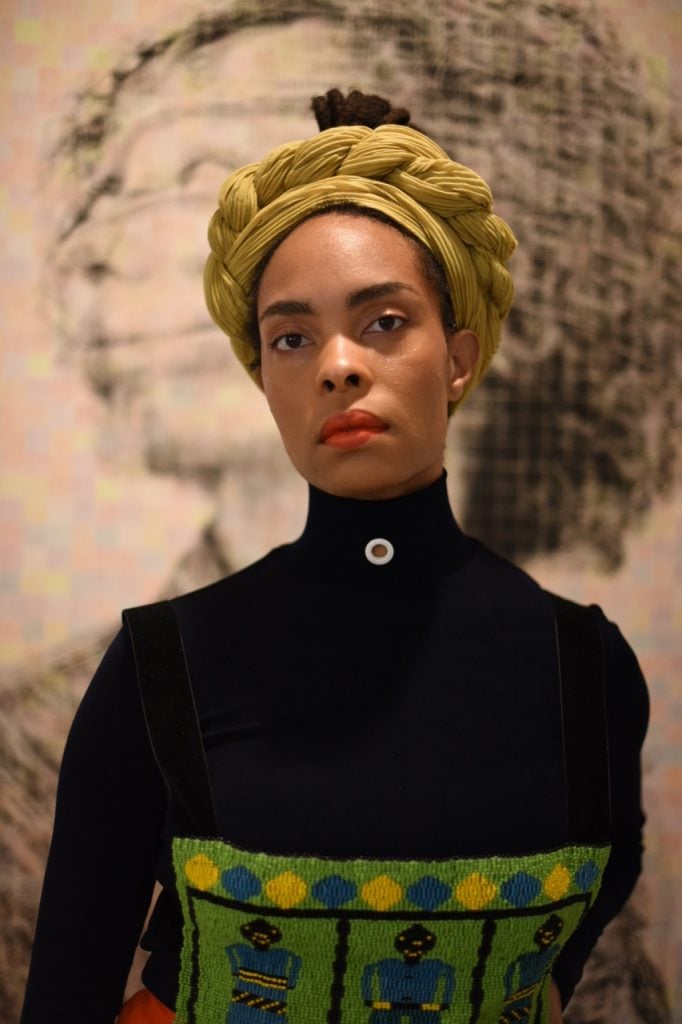
We checked in with the artist ahead of the opening of her first exhibition in the UK.

Naomi Rea

For her first exhibition in the UK, the Los Angeles- and Accra-based artist Kenturah Davis is exploring the poetics and politics of language. The show, opening at Pippy Houldsworth Gallery on December 3, plays with the etymological link between “text” and “textile,” as the artist often transforms hand-written script into thread using a Japanese weaving technique called shifu, and creates mesmerizing portraits that emerge from pencil rubbing over paper that’s been embossed with hand-written texts.
New text drawings and weavings by Davis will be shown alongside important unseen works by the feminist artist Mary Kelly, and work by Agnes Martin. The texts Davis draws from are varied and span subjects ranging from time travel to philosophy, but most often come from writings from Africa and its diaspora, including work by the academics Fred Moten and Jeddiah Isler.
The artist, who is represented by Matthew Brown in Los Angeles, has been steadily gaining traction among US institutions in recent years. Her work is in the collections of Blanton Museum of Art in Austin, the Bunker in West Palm Beach, Florida, as well as the Rubell Family Collection and the Hammer Museum, among others. Her first museum solo show, “Everything That Cannot Be Known,” is currently on view at Savannah College of Art and Design in Georgia.
We caught up with the artist to talk about how she digs herself out of a creative rut, the snack foods that fuel her studio practice, and the vital importance of a good dance break.
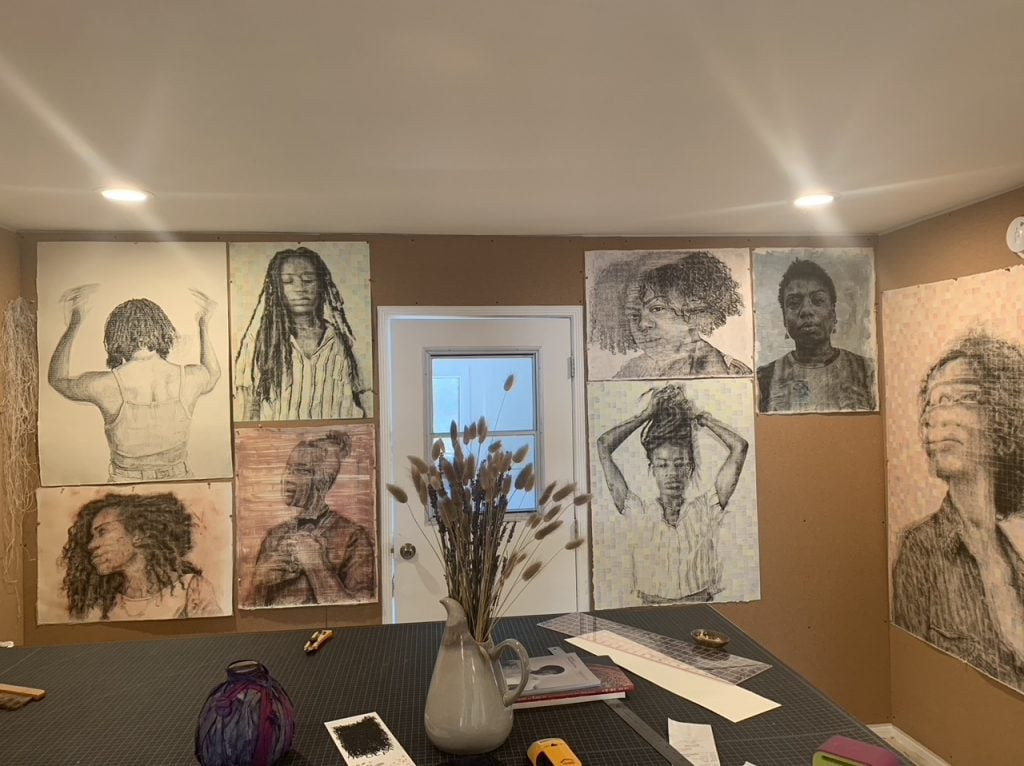
Kenturah Davis’s studio, showing text drawings in progress. Image courtesy the artist.
What are the most indispensable items in your studio and why?
Writing utensils and handmade paper, much of which was made in Japan. They are beautiful, supple papers that make for wonderful drawing surfaces.
Also, my Nikon camera. Photography has become an increasingly important part of my work. I reference photographs for the making of my text drawings. I’ve been experimenting with long exposures that have really opened up so much territory and possibility in my work.
What is the studio task on your agenda tomorrow that you are most looking forward to?
Weaving! I’ve been transforming paper text drawings into thin threads and then weaving with them. It is a very slow and meditative process that has no shortcuts, and it demands a sensitive and delicate touch. This process quite literally merges text and textile.
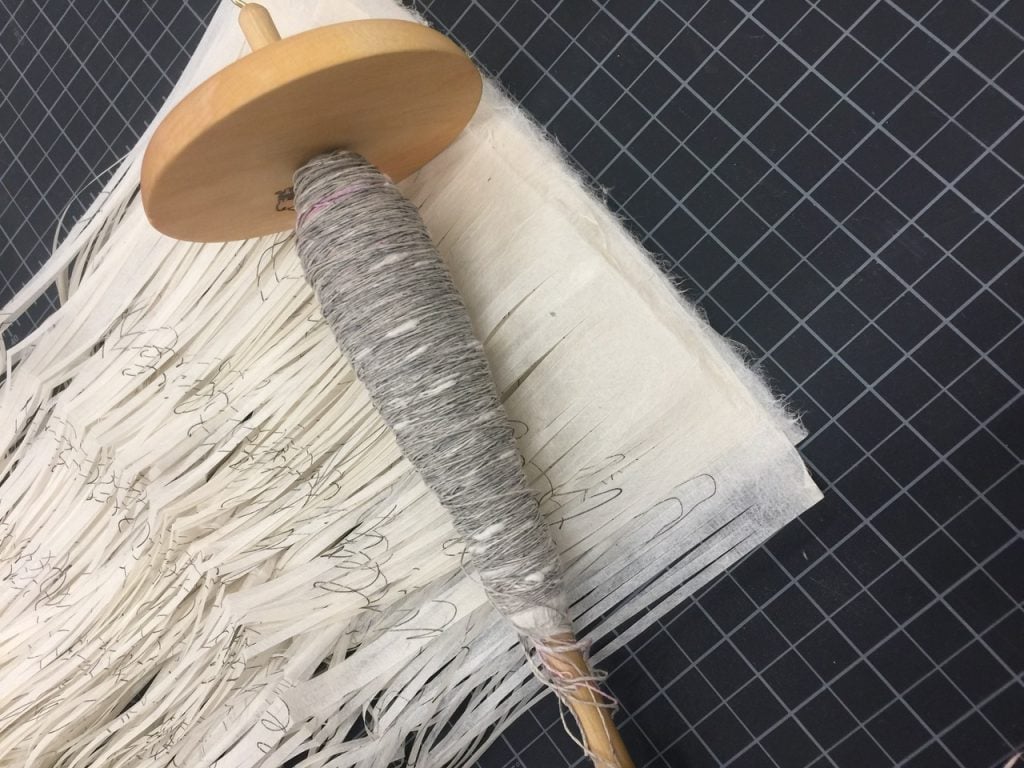
Kenturah Davis’s studio showing preparations for paper thread weaving. Image courtesy the artist.
What kind of atmosphere do you prefer when you work? Do you listen to music or podcasts, or do you prefer silence? Why?
All of the above, depending on the phase of a project. Silence is valuable in the early stages of meditating on an idea, or making decisions about the image and the text. Once I start a drawing, I usually find a rhythm while alternating between music and podcasts. Occasional dance breaks are important to relieve soreness and tension from doing repetitive gestures while drawing and weaving, and to maintain an overall sense of levity.
What snack food could your studio not function without?
Granola, hand-whisked matcha green tea, Topo Chico mineral water (with a twist of grapefruit), a handful of arugula. Not necessarily at the same time.
Who are your favorite artists, curators, or other thinkers to follow on social media right now?
I think Alexandra Bell’s work is brilliant. The clarity of her work in showing the distance between truth and fact really punctuates the ways in which language enforces hierarchies and perceptions of our world.
I’m deeply moved by the work of Simone Leigh. I’m almost at a loss for words in describing my experience of her work. Her sculptural forms embody such a poetic and radical presence. Her embrace of sisterhood in the landscape of her practice makes her work feel that much more generous. Both Simone and Alexandra have wonderfully engaging feeds on the socials.
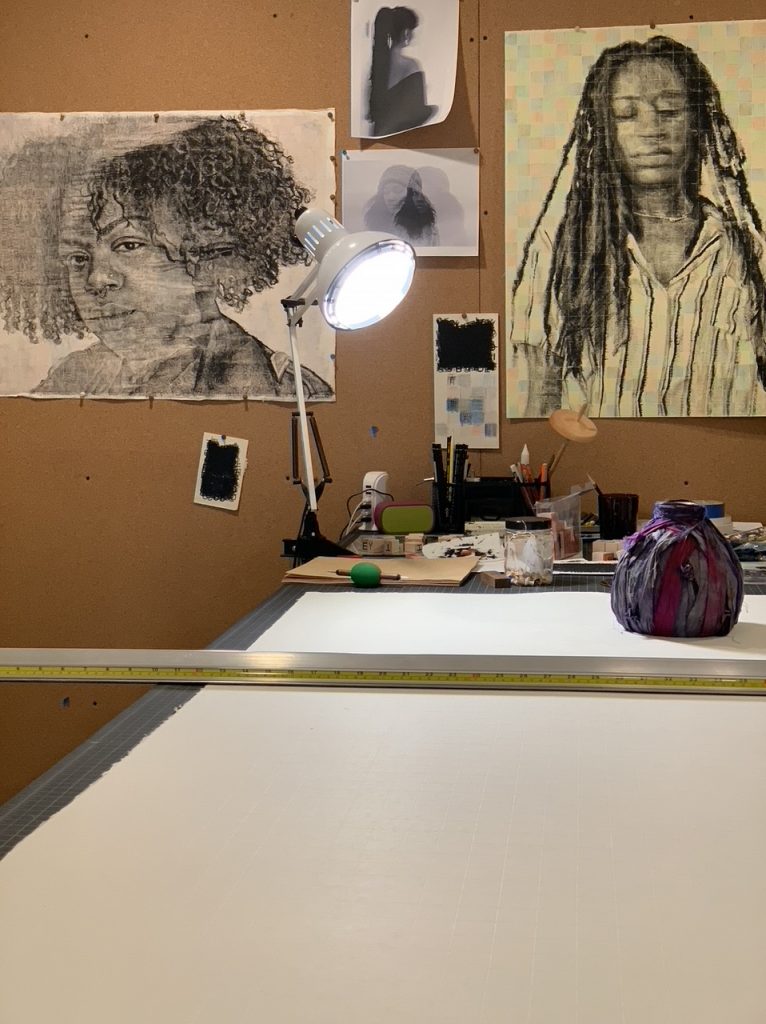
Kenturah Davis’s studio showing text drawings in progress. Image
courtesy the artist.
When you feel stuck in the studio, what do you do to get un-stuck?
The dance breaks come in handy; turning up the volume on a song I love. Alice Smith’s cover of Nina Simone’s “I Put a Spell on You” is a whole mood. OutKast’s “Slum Beautiful” hits the rotation when I need a more upbeat groove.
I also love referring back to any of Toni Morrison’s essays; they always help me untangle conceptual knots when I’m working. Sometimes I like just looking at books, not necessarily to read them in that moment, but to just study how text or images are arranged on a page and organized into an object.
What is the last exhibition you saw (virtual or otherwise) that made an impression on you?
It’s tough to choose, so I have to name two. Just before quarantine I revisited Julie Mehretu’s show at LACMA because she has absolutely been one of my favorite artists since 2001. Her work is so meta and envelops you with the scale of her paintings and momentum of her marks.
Secondly, I just recently saw the sculptural work of Masaomi Yasunaga at Nonaka Hill gallery and was really moved by his forms. They appear to be ceramic vessels, but he often manipulates glaze (without clay) into these fascinating vessels.
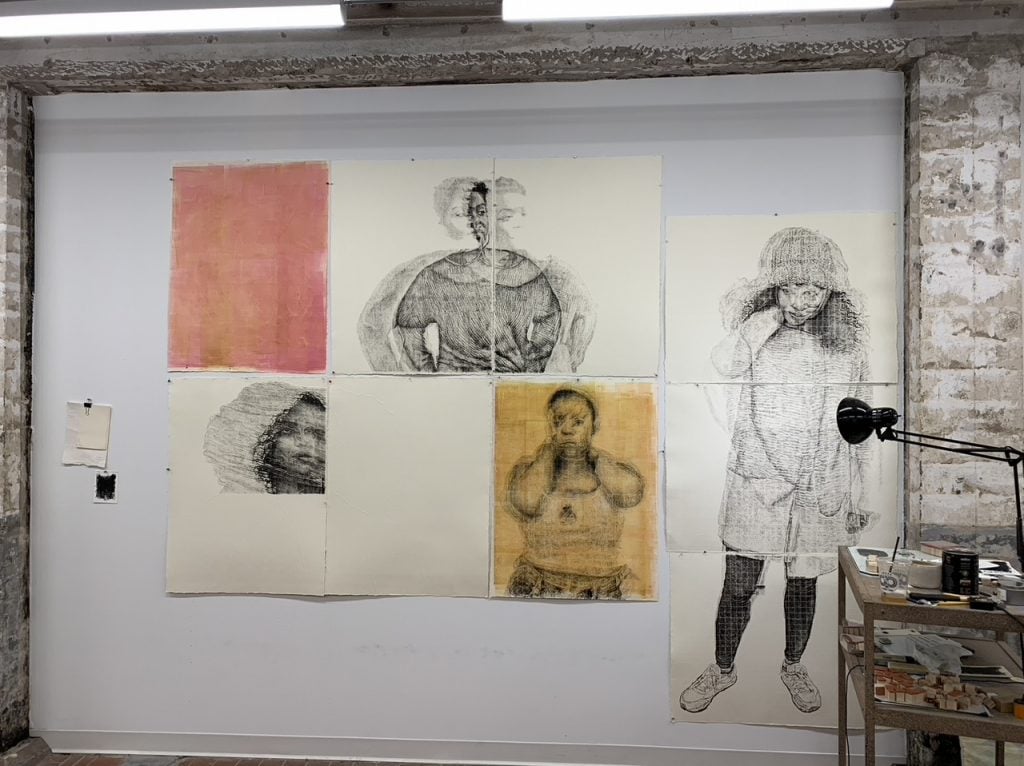
Kenturah Davis’s studio showing text drawings in progress. Image courtesy the artist.
If you had to put together a mood board, what would be on it right now?
“Lines of Thought” is on view at Pippy Houldsworth Gallery, London, December 3 2020 through 6 February 2021.